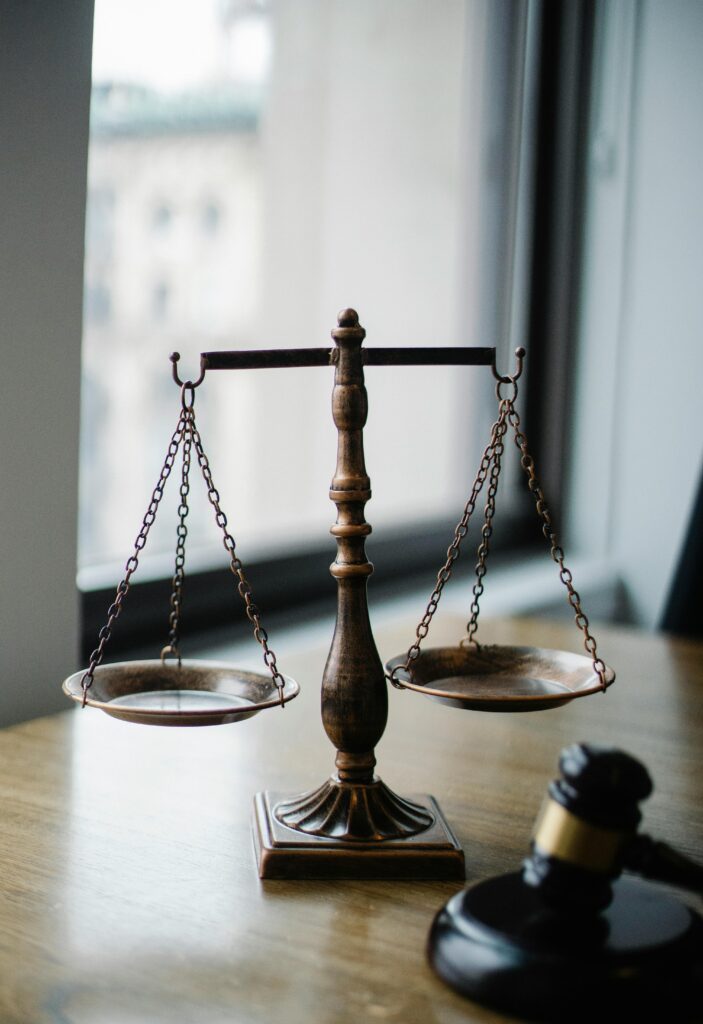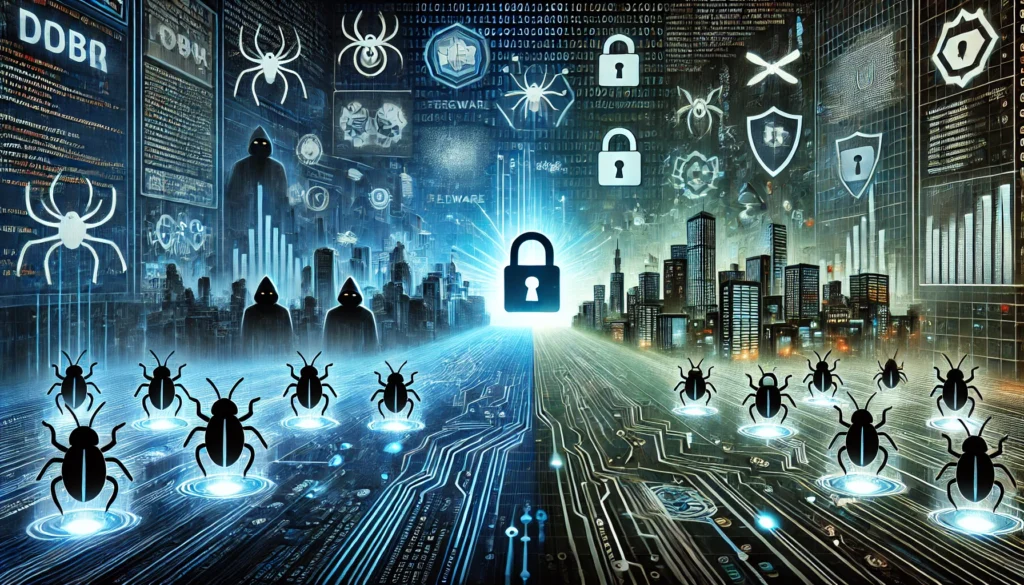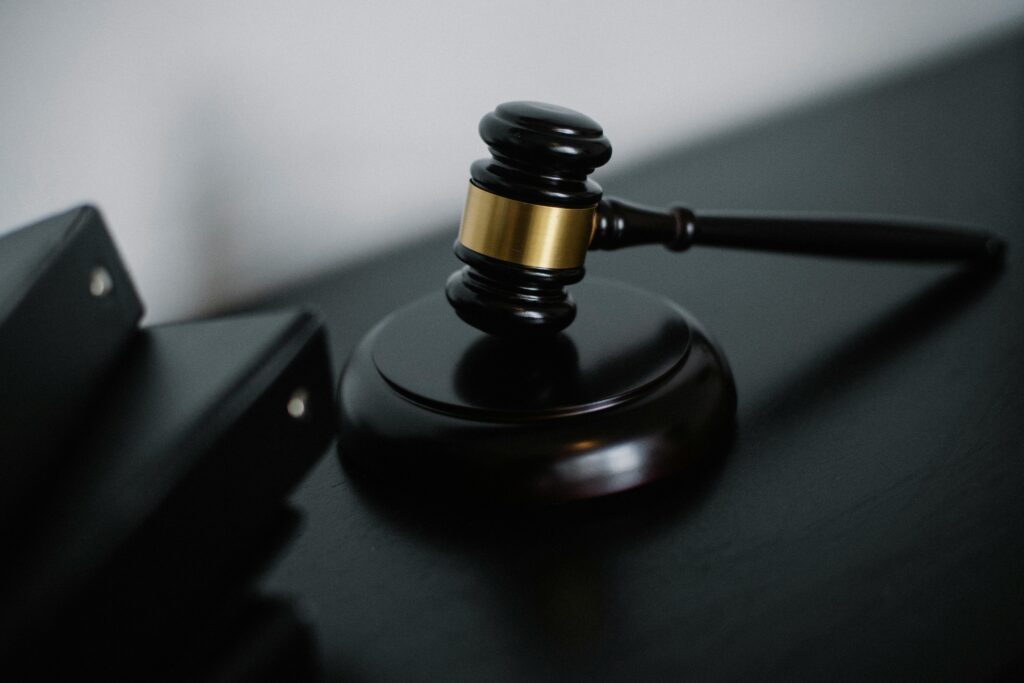Published On: October 15th 2025
Authored By: Shreshtha
Guru Gobind Singh Indraprastha University
Abstract
Digital distribution has tested the limits of India’s copyright doctrines and enforcement architecture. This article re-examines the statutory rights most implicated by online uses, explains how courts have framed direct and secondary liability for platforms and operators, and traces the evolution of injunction practice from John Doe/Ashok Kumar orders to dynamic, rolling site-blocks tailored to “rogue websites.” It also clarifies the operation of Section 52’s fair dealing and educational exceptions in contemporary settings, the role of technological protection measures (TPMs), and the interaction between the Copyright Act, 1957 and the Information Technology Act, 2000 (and rules). Drawing on leading Indian decisions, it proposes practical compliance steps for rightsholders, intermediaries, and institutions and highlights unresolved questions at the edges of short-form video, live sports, and generative AI.
Introduction
The internet collapses the time and cost of copying. In hours, a newly released film can be captured, mirrored across shifting domains, and streamed to large audiences; short-form clips multiply through social apps; academic articles surface through shadow repositories; and live sports are rebroadcast by transient sites that vanish as quickly as they appear. Indian courts have responded with pragmatic tools—dynamic injunctions and targeted blocking—while holding fast to statutory exceptions that protect education, research, and public discourse. Day-to-day enforcement now depends as much on intermediary processes under the Information Technology framework as on the Copyright Act’s substantive rights. The central challenge is to control systemic infringement without suffocating lawful uses or delegating censorship to private actors.[1]
Rights, Infringement, and Digital Uses
- Exclusive rights and digital “making available”
Indian law confers a familiar bundle of rights—reproduction, issuance of copies, communication to the public, and adaptation/translation—across literary and artistic works, films, and sound recordings. In digital contexts, “communication to the public” is the fulcrum: on-demand streaming and hosting that puts a work within reach of the public falls squarely within the statute’s definition, which reflects India’s 2012 alignment with international norms around “making available.”[2]
- Typical online infringements and moral rights
Online infringement typically manifests as unauthorized uploads, persistent hosting, index-based facilitation, torrent seeding, or real-time streams. Authors’ moral rights—paternity and integrity—apply online as well, covering misattribution and derogatory treatment, though remedies tend to be injunctive with compensatory relief where proven.
- Civil and criminal levers; anti-camcording
Civil suits anchor enforcement through injunctions, delivery up, damages or accounts, and costs. Criminal provisions target knowing infringement and commercial-scale dealing in infringing copies, which is pertinent for organized piracy. Anti-camcording reforms in cinematograph law address a key leakage point in the release window.
Liability Online: Direct, Secondary, and Platform Contexts
- Direct infringement and live content
Courts have readily found “communication to the public” where defendants host, stream, or otherwise transmit works to audiences, with live sports disputes illustrating the need for rapid, event-bound orders to prevent ongoing harm in narrow time windows.[3]
- Authorization and contributory fault on platforms
Section 51 allows liability to reach beyond immediate uploaders to those who authorize or knowingly facilitate infringement. Indian courts analyze knowledge (especially once specific notices are received), control over the tool or service, financial benefit tied to infringing activity, and the reasonableness of remedial steps. In Super Cassettes v. MySpace,[4] the Delhi High Court evaluated platform design, post-notice action, fingerprinting, and monetization, tying intermediary exposure to diligence after notification.
- Market-facing platforms and seller listings
The Kent RO[5] line illustrates that once platforms are on specific notice of infringing listings—or have tools to detect and suppress them—failure to act can justify injunctions and influence any safe-harbor posture, even if the technical architecture involves user-provided content or third-party storefronts.
- Streaming services and licensing expectations
In Tips v. Wynk,[7] the Bombay High Court made clear that interactive digital streaming requires appropriate licenses and squarely fits within “communication to the public,” rejecting attempts to shoehorn on-demand access into exceptions. The opinion is notable for grounding its analysis in statutory text while candidly acknowledging contemporary modes of access.
- Systemic access and shadow repositories
Disputes over mass access to scientific literature—exemplified by pending litigation involving Sci-Hub—raise difficult questions at the junction of research access, licensing markets, and injunction standards. However resolved, this line of cases will likely affect how Indian courts weigh educational defenses against organized, systematic reproduction at scale.
Intermediaries, Immunity, and Due Process
- Actual knowledge and the channeling function
The Supreme Court’s decision in Shreya Singhal invalidated Section 66A and, critically, read “actual knowledge” to mean knowledge via court order or government notice. This keeps systemic takedown demands within judicial or authorized executive processes and avoids turning platforms into first-instance adjudicators of legality based on private complaints alone.
- Intermediary Rules and practical compliance
The 2021 Rules require grievance redressal, designated officers for certain platforms, and timely response to judicial or governmental orders. In practice, rightsholders secure interim injunctions and then serve them across the stack—hosts, search engines, CDNs, ISPs, registrars—to achieve coordinated effect without imposing generalized monitoring duties disfavored by Shreya Singhal.[1]
- What courts expect from intermediaries
Courts look for prompt and documented compliance, steps to prevent reappearance (hashing exact matches for the life of an order), and monetization policies that do not reward infringing traffic. Intermediaries that can produce auditable logs and show principled enforcement fare better when courts tailor injunction scope and consider proportionality.[1]
Exceptions and Limitations Online: Section 52
- Structured fair dealing and educational uses
India’s approach is purpose-linked: private or personal use (including research), criticism or review, and reporting current events, plus targeted exceptions for education, libraries, transient storage, and technical acts. This design protects socially beneficial uses without open-ended balancing but still requires careful, fact-sensitive application in digital settings.
- Course packs as a guidepost
The Rameshwari Photocopy ruling validated course packs under Section 52(1)(i) where tied to pedagogy and non-commercial classroom use, with the appeal’s withdrawal leaving the single-judge reasoning influential in practice. Universities should treat it as guidance, not blanket immunity, especially for digital reserves and LMS materials that could substitute for market offerings if overbroad.
- News, review, and clip culture
Short clips may be justified for reporting or commentary when necessary for the message; routine entertainment clipping without critical context generally will not. Platform-level licenses for recordings and compositions mitigate risk for creators, especially given overlapping rights in sound recordings and underlying musical works.
- Transient copies and functional processes
Section 52’s allowances for transient or incidental storage and necessary technical acts help reconcile caching, buffering, indexing, and similar processes with lawful access. Although “transformative use” is not a statutory test in India, courts avoid penalizing non-consumptive, functional steps that align with the text and do not substitute for the work.
TPMs, RMI, and Anti-Circumvention
- Legal protections and carve-outs
Post-2012 provisions protect technological measures and rights management information, targeting circumvention intended to enable infringement while recognizing exceptions for law enforcement, research, and interoperability. These sections support actions against tools marketed to defeat DRM on premium streams or subscription services.
- Combining TPM relief with dynamic blocking
Where circumvention tools dovetail with piracy operations, courts have granted injunctions and delivery-up orders, with the strongest deterrent effect when combined with dynamic blocking that shuts down mirrors and redirect domains proliferating the same scheme.
Injunctions and Site-Blocking: Precision and Scale
- John Doe/Ashok Kumar orders for acute risk
Because online infringers are often unidentified and ephemeral, courts deploy John Doe/Ashok Kumar orders as preventative tools, especially for first-release windows and live events. These orders are increasingly paired with instructions to ISPs and other intermediaries for swift, targeted execution.
- “Rogue websites” and dynamic injunctions
The Delhi High Court’s UTV v. 1337X decision crystallized a practical template for addressing sites whose primary purpose is piracy: identify them as rogue websites and authorize extension of blocks to mirrors and alphanumeric variants by affidavit, without re-litigating each successor domain. This reduces delay and administrative burden while preserving court supervision.
- Proportionality and iterative calibration
Courts now emphasize narrower, time-bound measures where feasible: URL/path-level blocking (rather than whole-domain) for specific infringements; event-window orders that expire promptly; and review mechanisms for third parties to seek modification. Affidavit cycles and periodic reporting help keep blocks aligned with evolving facts and minimize collateral impact.[3]
- Damages and the evidentiary burden
While injunctions are the workhorse remedy, damages or accounts of profits are awarded where plaintiffs can tie revenue and traffic to infringing activity—particularly for platforms that knowingly monetize such traffic. That requires credible metrics, logs, and (where possible) internal documents showing tolerance or incentivization of misuse.
Jurisdiction, Evidence, and Cross-Border Coordination
- Targeting India and effects-based analysis
Jurisdiction turns on accessibility plus indicia of targeting: INR pricing, India-focused marketing, subscriber footprints, or schedules aligned with Indian audiences. Plaintiffs often combine India-based orders with actions targeting foreign hosts, domain services, and payment intermediaries, reflecting the multi-node nature of online distribution.
- Evidence that persuades
The most effective filings include hash evidence, timestamped captures, DNS/WHOIS histories linking mirrors to core operators, and ad/affiliate screenshots showing monetization. Defendants counter with response-time logs, reappearance-prevention protocols, and documentation of consistent enforcement, helping courts tailor relief.
- Implementation playbook
Orders that specify exact domains, paths, IP ranges, and time windows minimize ambiguity and speed compliance. Coordination with ISPs and, where needed, DoT/MeitY guidance smooths rollout. Dynamic injunctions thrive on disciplined affidavit updates; rightsholders should maintain chain-of-custody records and standardized templates.[1]
Comparative Touchpoints (Brief)
- Europe’s licensing-forward model
The DSM Directive pushes certain platforms toward ex ante licensing or content recognition for user uploads. India prefers a judicially supervised, order-driven model, focusing on rogue-site suppression and due-process-based takedowns rather than generalized upload filtering. Both approaches place structured responsibilities on intermediaries but at different procedural stages.
- U.S. conditional immunity and repeat infringers
DMCA safe harbors hinge on reasonably implemented repeat-infringer policies and notice/counter-notice procedures. India’s anchor is different: actual knowledge via lawful orders, per Shreya Singhal, with large-scale removal channeled through courts. The practical effect is a more court-centered process for systemic remedies like site-blocking.
Practical Guidance and Open Questions
- For rightsholders
– Prepare affidavit-ready evidence: hashes, mirrors, DNS linkages, and screenshots, anticipating dynamic injunction updates.
– Request surgical relief: path-level blocks where feasible; event-window orders for live content; and clear criteria for treating mirror/redirect domains as successors.
– Align enforcement with access: accelerate lawful availability (OTT windows, academic licenses) to reduce substitution incentives.
– Build damages files early: ad metrics, traffic analytics, and financials tying revenue to infringing access.
- For intermediaries and platforms
– Institutionalize compliance: track, timestamp, and archive responses to court/government orders; publish transparency metrics where required.[1]
– Prevent reappearance: hash known infringing files for the life of orders; maintain blocklists keyed to affidavits and update cadences.
– Tighten incentives: align monetization with compliance; enforce repeat-infringer policies consistently.
– Provide remedy channels: enable appeals for mistaken removals to reduce overblocking and demonstrate good faith.[1]
- For educational and research institutions
– Implement Rameshwari-grounded governance: syllabus-linked necessity reviews, librarian oversight, and logs for course pack and e-reserve uses.
– Prefer licenses for systemic needs: campus-wide journal/database access; invest in open-access initiatives to relieve pressure at the margins.
– Document decisions: maintain records that explain reliance on Section 52 in case of dispute.
- Policy suggestions
– Codify proportionality in blocking: guidance on URL-level blocks, time-limited orders, and review mechanisms to minimize collateral impact.
– Clarify TPM exceptions: sharper rules for interoperability, security research, and accessibility to avoid chilling legitimate work.
– Encourage technical standards: authenticated notice formats, shared hash repositories for adjudicated content, and cross-ISP implementation norms.[1]
- Emerging edges
1) Generative AI: India has not yet decided whether training on copyrighted corpora infringes. Likely focal points include whether intermediate copies are infringing, whether any Section 52 exception could apply to non-consumptive analysis, and how to handle memorization/regurgitation in outputs. Developers should document dataset provenance and deploy regurgitation safeguards.
2) Short-form music and video: Overlapping rights in recordings and compositions complicate creator use; platform-provided licensed libraries reduce risk. Uses framed as commentary or review are more defensible than entertainment-only snippets.
3) Live sports: Expect more precise, time-bound orders and coordinated ISP/CDN implementation, with prompt unwind post-event to honor proportionality.[3]
Conclusion
India’s legal system has adjusted to digital realities by blending substantive rights, due-process-centered intermediary obligations, and agile remedies. Dynamic injunctions against rogue websites deliver speed and scalability, while proportionality principles curb collateral effects. Section 52 continues to safeguard education, research, criticism, and news, reflecting constitutional commitments to access and expression. The current trajectory—court-supervised enforcement, disciplined intermediary compliance, and attention to technical feasibility—offers a stable foundation as new challenges emerge in AI, short-form content, and live events. Continued refinement of proportional blocking norms, TPM exceptions, and technical standards can preserve that balance—protecting creators and industries without stifling the educational and expressive uses essential to a robust digital society.
References
1) Shreya Singhal v. Union of India, (2015) 5 SCC 1 (India).
2) Ministry of Electronics & Information Technology (MeitY), Intermediary Guidelines & Digital Media Ethics Code, Rules 2021 (and subsequent amendments/clarifications).
3) Star India Pvt. Ltd. v. Akuate Internet Servs. Pvt. Ltd., 2016 SCC OnLine Del 12565 (India).
4) Super Cassettes Indus. Ltd. v. MySpace Inc., (2017) 236 DLT 478 (Del HC) (India).
5) Kent RO Sys. Ltd. v. Amit Kotak, 2017 SCC OnLine Del 7201 (India).
6) Kent RO Sys. Ltd. v. eBiz.com Pvt. Ltd., 2017 SCC OnLine Del 7223 (India).
7) Tips Indus. Ltd. v. Wynk Music Ltd., 2019 SCC OnLine Bom 110 (India).



